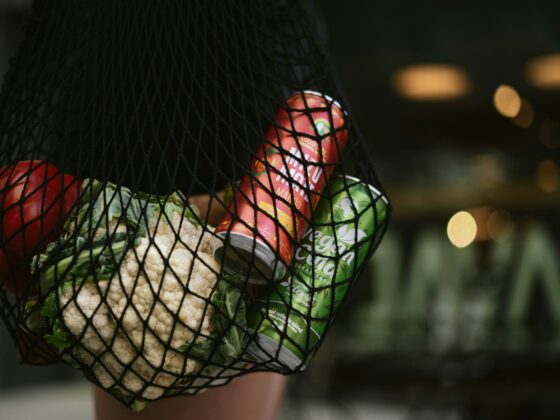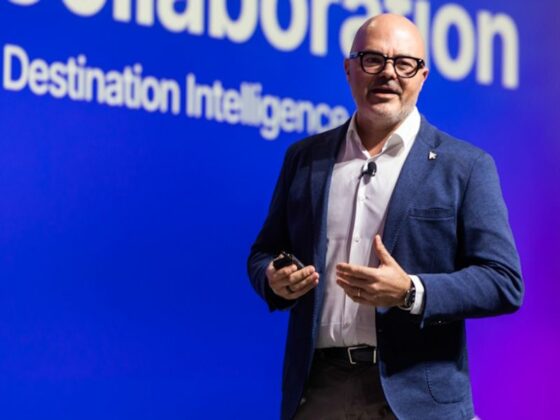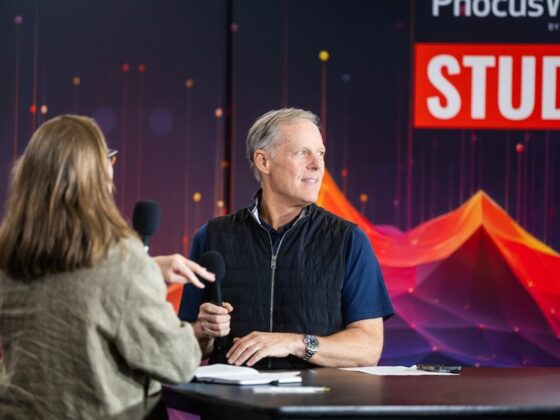Shiji Insights spoke with Arthur Leliveld, co-owner of Annoncer, a restaurant and F&B technology provider, to explore how technology can empower chefs at all levels of food operations and allow for more creativity. In this interview, Arthur sheds light on the changes happening in the tech space in 2023, specifically in the often-overlooked department of kitchen operations.
Where F&B Tech Stands Today
- F&B technology, such as kitchen screens, is no longer exclusive to fast-food operations. Automated ticket management systems can help chefs free up time for creativity and enhance the dining experience.
- Kitchen technology should integrate seamlessly with other F&B tech, such as POS, reservations, ordering, and ticket management systems, to ensure efficient communication between the kitchen and service.
- For Chefs and restaurateurs, this is a powerful tool to improve their daily work and enhance the guest experience.
To start, could you provide some background on your company and your role? What kind of F&B technology does Annoncer offer?
I am the co-owner & Business Development of Index Hospitality Systems. My business partner Robert Sanders, co-owner and product owner of Annoncer, and I have been active in the restaurant industry for over 25 years, providing various technologies for restaurants, from the classic point-of-sale (POS) systems to large-scale projects like Burger King, Taco Bell and KFC’s global operations. Around 10 to 15 years ago, we began distributing kitchen technology to restaurants. While it was already common for fast-food chains like McDonald’s and Burger King to use screens for order processing instead of paper tickets, this was not yet prevalent in full-service, fine-dining, or gastronomy restaurants.

About seven years ago, a two-Michelin-starred chef in Amsterdam approached us with the challenges in their kitchen, including handling 20-course meals, accommodating food allergies, and dealing with conflicts within the kitchen team. They asked if we could develop a system similar to what we provided to fast food restaurants. Initially, we dismissed the idea, explaining that the screens in these operations were used to guide less experienced kitchen staff step-by-step, whereas their kitchen was staffed by professionals, albeit with no shortage of operational challenges. However, we eventually started working on a product called Annoncer, a ticket management system designed specifically for full-service and fine-dining establishments. This system focuses on guests, integrates with reservation platforms, and addresses challenges related to food preferences and allergies, which are among the biggest concerns in food operations. By bringing reservation information directly to the kitchen through the POS ticket, chefs can work more efficiently. What we initially thought would be a niche product turned out to be widely adopted and beneficial for anyone serious about delivering exceptional food, as fine dining extends beyond Michelin-starred restaurants.


Despite the differences between Annoncer and systems used in fast-food restaurants, such as displaying full tickets, managing courses, allergy information, and recognizing repeat customers, the interface is designed to be user-friendly and intuitive. In fact, our company rewards developers for simplifying the interface by removing buttons instead of adding more. Unfortunately, kitchen operations, especially in fine dining establishments, are often overlooked by IT professionals developing software solutions.
How can F&B technology like Annoncer support chefs in their creativity and everyday work?
We have found that convincing chefs to transition from paper tickets to technology can still be challenging. However, we remind them of how chaotic it was to manage reservations before platforms like SevenRooms or Infosys came into play. Nowadays, high-end restaurants are embracing technology to streamline the sharing of information between guests, waitstaff, and chefs. This integration allows for improved service, better guest interaction, and ultimately, better food. With the extra time gained, chefs can focus on their craft and enhancing their menus.
If you observe a chef’s work during the first three hours of service in a serious restaurant, you’ll notice that a significant portion of their time is spent resolving other people’s issues. They receive inquiries such as the number of remaining orders for the night or the number of gluten-free requests. By providing each station with a screen that displays the upcoming orders for that service, chefs can now focus on more critical matters. This also applies to front-of-house teams who can prioritize their tables and determine the timing for serving the next course. Previously, they were working blindly, but now the screen provides the kitchen with a comprehensive view, enabling better organization and the delivery of high-quality food. Modern fine dining kitchens often suffer from process errors that are mistakenly considered part of the job, but they can be rectified.
Are there other examples of overlooked everyday tasks that have a crucial impact on the dining experience?
One often overlooked detail is the proper ordering of tickets. With paper tickets, notifications are printed in the order they were punched in and must be manually rearranged and grouped with older tickets. This requires physical movement and organization by the chef. On the other hand, a digital ticket board automatically prioritizes the tickets. Chefs can focus solely on preparing the next item in the correct sequence, based on the order of service. When chefs consider transitioning to this system, they often wonder if all the tickets will fit on the screen. I always explain that this is precisely what needs to change. Chefs were trained to oversee the entire process, but in reality, they only need to focus on the five or six relevant tickets at a given moment. The system ensures that the next important ticket is displayed.
Another significant aspect is handling food allergies, which is a major concern for restaurants. Systems like Annoncer allow allergies to be attached to individual guests, and whenever an order is placed for them, it is immediately visible in the system. This eliminates the risk of forgetting or failing to communicate allergy information to the kitchen.
A third functionality is providing kitchen stations with summaries to organize service. Knowing what tasks need to be completed next and later in the evening is just as important as focusing on the current tasks.
For top-tier establishments, the system can save a significant amount of time spent on maintaining guest profiles. It retains information gathered about guests prior to their arrival, including their dining history. This ensures a highly personalized experience where each visit offers a unique menu tailored to the individual’s preferences. In the past, this was a manual process involving large file cabinets and heavy files. A suitable analogy would be competing in a Formula 1 race with a bicycle, then suddenly having access to an actual Formula 1 car. So now you are not fighting to stay in the race, you are now competing for the top spot. Ultimately, restaurants can consistently meet their high standards and make better use of their time, redirecting their energy towards prioritizing the guest and perfecting the food.
Can you identify any trends that restaurateurs and hospitality tech professionals should be aware of?
The adoption of screens still varies significantly by country. For instance, in Amsterdam, I would estimate that 8 out of 10 restaurants use them. However, in countries like Germany, France, or Italy, the numbers are considerably lower. Building trust in technology remains an ongoing challenge, but the word is spreading.
Regarding reviews, I believe the review system is controlled by sometimes intimidating companies, and restaurants are relinquishing control of their own data. On the other hand, reservations are moving towards a better place, with platforms increasingly allowing restaurateurs to retain ownership of their data. As customers regain centrality, the entire journey from booking to review becomes more focused on them. Examples include the growing trends of veganism and healthier diets, which have already gained traction and will continue to be important.
However, in all honesty, I think we are driven more by problems than by trends. Post-COVID, staff retention and hiring in the food and beverage industry have become global challenges. Many people found jobs in other industries that offer comparable or better pay for less work, so why would they return to the hospitality industry? This shift has prompted restaurateurs to become better employers by providing improved working conditions, more reasonable hours, and better compensation that aligns with industry standards.
Can you share any stories of chefs who have adopted this technology and witnessed significant impacts or discovered more creative ways of working?
Chef Yannick Alléno, who operates the three-Michelin-starred Alléno Paris and other restaurants, has stated that his team will not open a restaurant without screens anymore. He emphasizes the benefits of avoiding mistakes related to allergies and the increased speed of communication between the service and kitchen. These improvements have allowed for better kitchen organization and order management.
At the two-Michelin-starred restaurant Amber in Hong Kong, chef Richard Ekkebus added courses to their menu and even expanded the restaurant after implementing the system. As a surprise, one of the courses is served to diners directly in the kitchen—an experience that would not have been possible without such technology.
Ultimately, technology enables these highly creative restaurants to push boundaries and deliver even more extraordinary experiences. This impact is particularly notable in high-end establishments, hinting at what the future holds.
RELATED:








